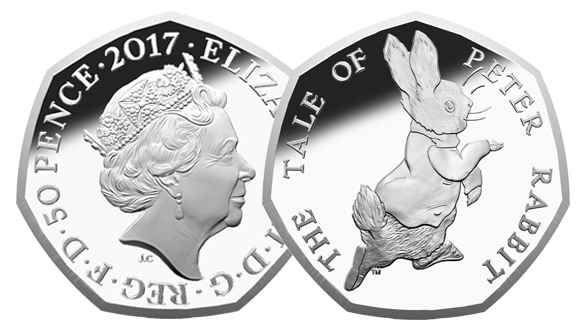Posts Tagged ‘Coin Collecting’
Released today: the new 2017 United Kingdom Prince Philip £5 coin
On 4th May Buckingham Palace announced that HRH the Duke of Edinburgh, after 70 years at Her Majesty’s side, would be retiring from public duty. To mark this record-breaking achievement, and celebrate his 70 years of service to Her Majesty the Queen, The Royal Mint have today released a brand new design in tribute to Prince Philip.
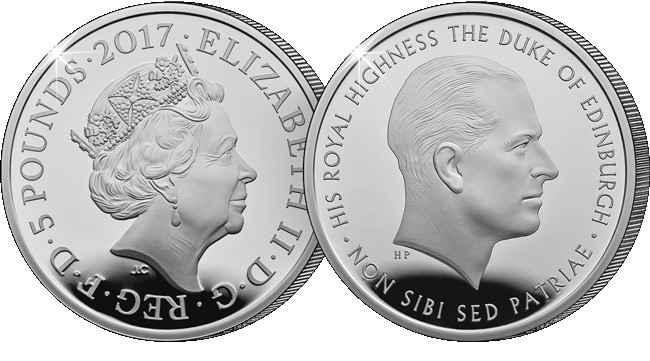
The design features Humphrey Paget’s (1893-1974) portrait of The Duke of Edinburgh. Paget’s legacy was much more than just this portrait though – he is now considered to be one of the most exceptional coin artists of the 20th century.
The Royal Mint’s coin designer Lee R. Jones has added to the portrait to include a table inscription and an edge inscription. The final design has been officially approved by Prince Philip himself.
The coin is available in Gold Proof, Silver and Brilliant Uncirculated Base Metal. Here’s your guide to the new 2017 United Kingdom Prince Philip £5 coin range:
Perfect Quality. Very Affordable.
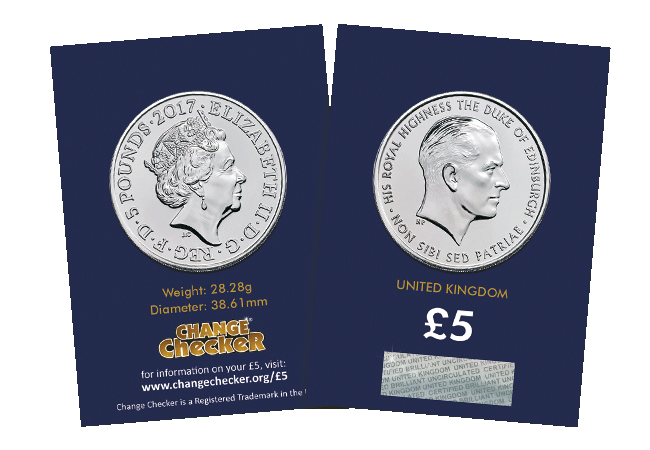
The Prince Philip CERTIFIED BU £5 Coin
The Royal Mint is releasing a brilliant uncirculated base metal version of the Prince Philip £5 coin. These coins have been specially struck and carefully handled to ensure that they are free of scratches and chips found amongst circulating coins.
Known as Brilliant Uncirculated (BU), they are available for £13.00 in a Royal Mint Presentation Pack or £10.99 in a Change Checker Certified Brilliant Uncirculated Collector Card.
Silver Proof – the Collector’s Favourite.
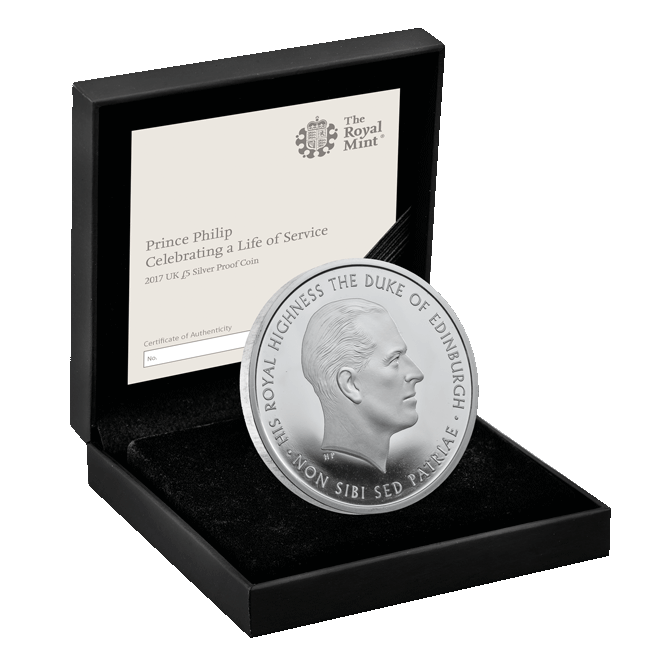
UK 2017 Prince Philip Silver Proof £5
The Silver Proof £5 coin is firmly established as the most sought-after coin amongst collectors because they have all the qualities that collectors really desire.
- Precious metal content – struck from 925/1000 Sterling Silver
- Strictly Limited Edition – just 3,000 coins. That’s EVEN LESS than the last UK Prince Philip coin issued for his 90th birthday. With a mintage of 4,599 it was, at the time, the most limited Silver Proof UK £5 coin ever issued.
- The perfect Proof Finish – even better than Brilliant Uncirulated. Proof coins are struck several times using specially polished dies to create a flawless finish with a perfect mirrored background. The ultimate coin quality.
The Gold Standard
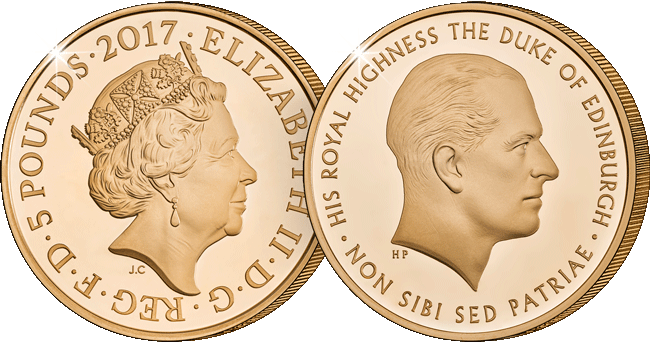
UK 2017 Prince Philip Gold Proof £5
For the ultimate limited edition, a Gold Proof coin has also been issued. Struck in 22 carat Gold, just 300 of these coins have been authorised for release.
If you’re interested …
You can own one of the Prince Philip £5 Coins. Click here to see the range >>
200 years of the Sovereign. The UK’s First Ever Gold Proof Piedfort Sovereign.
Update, 27th June: It has now been confirmed that the Gold Proof Piedfort Sovereign has completely SOLD OUT at the Mint, in just 24 HOURS. It’s still available at The Westminster Collection, click here >>
2017 marks the bicentenary of the ‘modern’ Gold Sovereign – the most important numismatic anniversary for decades. To mark this occasion a number of special limited edition Gold Sovereigns have been released, including what might be the most important gold sovereign of them all – the first ever Gold Proof Piedfort Sovereign.
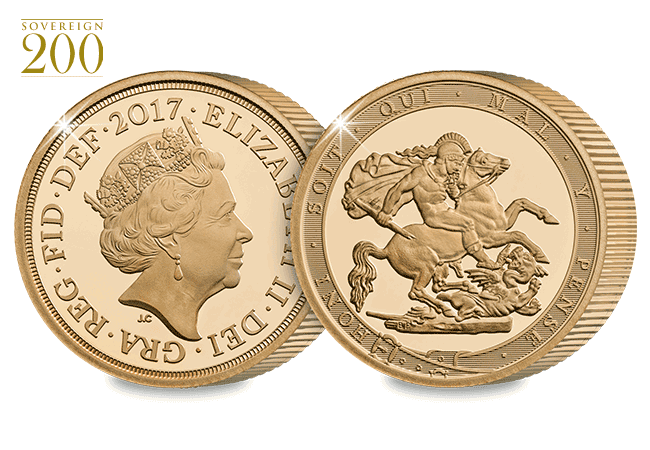
The Gold Sovereign is undoubtedly the United Kingdom’s most famous gold coin, and has been struck from 22 Carat Gold to the exact same specification since 1817.
To mark the 200th anniversary of the ‘modern’ Gold Sovereign, The Royal Mint has created a milestone in numismatic history by issuing the first ever Piedfort Sovereign.
Piedfort coins are some of the finest examples of British craftsmanship and the Gold Proof Piedfort Sovereign is no exception.
Prestigious reputation
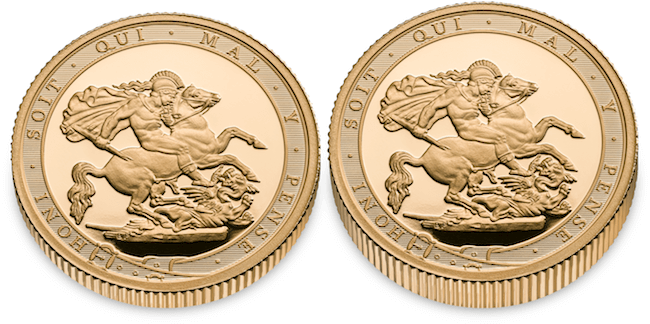
You can really see the difference in thickness of the Piedfort when compared to the standard issue.
The very first Piedfort can be traced back to the 12th century. First minted in France, the name directly translates to ‘heavy measure’. The striking of Piedfort coins began later in England, however examples are known to date back to the reign of Edward I.
Piedforts were considered prestige pieces and ownership was often used as a means to signify a person’s wealth and power.

Today, Piedforts continue to be limited issues and striking of such pieces is reserved strictly for the most important events. Therefore, it seems fitting the UK’s first Piedfort Sovereign has been struck to mark 200 years of the Sovereign.
From today, for the first time ever, collectors will be able to own the Piedfort Gold Sovereign and with an edition limit of just 3,500, this new release is sure to be one that will be treasured in years to come.
You can now own the First Ever Gold Proof Piedfort Sovereign, but with such a tiny edition limit, they won’t be available for long. Sign up below if you’d like to be contacted about owning this UK first:
Your message has been sent
New Peter Rabbit coin breaks the internet – Silver Proof 50p sells out in HOURS

The record-breaking 2017 Peter Rabbit UK Silver 50p Coin
Britain showed itself as a nation of nostalgic coin lovers as the release of the new Peter Rabbit Silver Proof 50p brought the numismatic net to a standstill.
At one point The Royal Mint had over 50,000 people in a queue to access its website and The Westminster Collection also saw record traffic – with all hands on deck to keep the servers running.
All available Peter Rabbit coins were sold out before the newspapers even ran a story – and collectors who got in early were left feeling like they won the lottery.
30,000 coins gone in just a few hours
The pandemonium echoed the release of the 2016 Peter Rabbit 50p, which also caused a collecting frenzy but was limited to 15,000 coins. This year’s issue has an edition limit of 30,000 but the demand was also amplified.
The coin was fully allocated across the board by 4pm, but the queues were still long as collectors changed their focus to the Brilliant Uncirculated editions of the coin. Savvy buyers were desperate to bag what will go down in history as one of the UK’s most sought-after coins.
Beatrix Potter coins are big news

Fully allocated across the board by 4pm on its day of issue
The lucky few that secured the 2016 coin for £55 now own a coin that changes hands for up to £400 on Ebay. This year’s coin has already started appearing in auctions, and whatever happens it looks like the £60 retail price will turn out to be a bargain.
Undoubtedly a few speculators got in there but with demand so high it was literally first come, first served – leveling the playing field and making getting a coin a real achievement for anyone.
Did you manage to secure a 2017 Peter Rabbit Silver Proof 50p? If you were one of the lucky ones, let us know in the comments!
We still have stock of the collector edition Certified Brilliant Uncirculated 2017 Peter Rabbit 50p available. Click here now to secure yours – you will also have the chance to pre-order the other three coins in the series.

